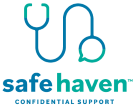via ktvh
HELENA — On Thursday, a panel of health care providers told Montana lawmakers that burnout is a growing problem in their field – and they urged that action be taken earlier, to address the problem before it starts affecting patients’ care.
The Legislature’s Children, Families, Health, and Human Services Interim Committee heard testimony about the impact doctors and nurses are feeling from burnout in their jobs.
Leaders say, for years – but especially since the COVID pandemic – increasing numbers of doctors and nurses have reported signs of burnout. The U.S. Surgeon General released an advisory on the issue in 2022, citing data showing between a third and half of nurses and physicians experienced symptoms like emotional exhaustion, cynicism and a low sense of personal accomplishment.
Are you dealing with burnout symptoms in your healthcare profession? See how SafeHaven can help support you.
Dr. Gabe Charbonneau, a family physician from Stevensville, has become an advocate for fighting burnout. He said it’s clear the problem can have an effect on patients. Doctors experiencing burnout may end up leaving their jobs, creating gaps in service that can be hard to fill – especially in rural areas.
In some cases, it can have direct impacts on interactions with patients. Charbonneau pointed to data showing doctors reported expressing frustration, taking less careful notes, and in some cases making uncharacteristic errors.
“These are not the doctors that we want to be,” he said.
Leaders said there are multiple causes contributing to burnout, starting with the demanding nature of these jobs. However, Brenda Donaldson, a registered nurse and a professional development specialist with the Montana Nurses Association, said it’s clear that a main factor for nurses is a lack of adequate staffing.
“It becomes a very distressful, internalizing thing as a nurse – or any professional for that matter – to say, ‘I know what that level of care should look like; I can’t provide it because there’s not enough staff, there’s not enough of me to go around to do that,’” she said. “That creates a lot of internal strife to carry around.”
Those testifying Thursday said one major challenge is doctors and nurses feel a stigma against seeking help. Donaldson said patients may see their health care providers as “superheroes,” and providers may feel they need to live up to that image.
“I personally experience feelings that I should be able to fix my burned-out self – that I’m alone and my colleagues are much stronger and more resilient, able to cope and carry on the work that we do,” she said.
Dr. Robert Sise, an addiction psychiatrist and the CEO of 406 Recovery, said there’s data showing the suicide rate among physicians is significantly higher than even that of active-duty military – another group known to be at risk.
Sise said another reason doctors and nurses may not seek care is because they fear, if they ask for mental health counseling or other services, it will be reported in their licensing process or to the boards that regulate them, and that that could affect their ability to practice.
“We are essentially waiting until people are caught and they’re really sick and their chances of recovering are a lot lower – and patients have suffered,” he said.
One idea they discussed during the hearing is the “SafeHaven” model, based on a program authorized by the legislature of Virginia. It set up a program where health care providers – initially doctors, but now also nurses, pharmacists, medical students and others – can get resources to help them with burnout and other mental health issues, but with legal protection ensuring confidentiality. Melina Davis, CEO of the Medical Society of Virginia, said the program has seen significantly higher engagement rates, and they’re looking at expanding it to other states.
Of course, these are not the only fields dealing with burnout. Later on Thursday, the same committee also got an update on causes of burnout among behavioral health workers. Several lawmakers also said they were interested to see more data on how health care fields compare with others, like first responders, when it comes to burnout.

